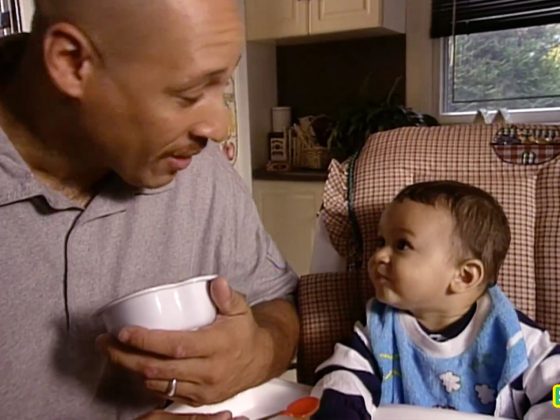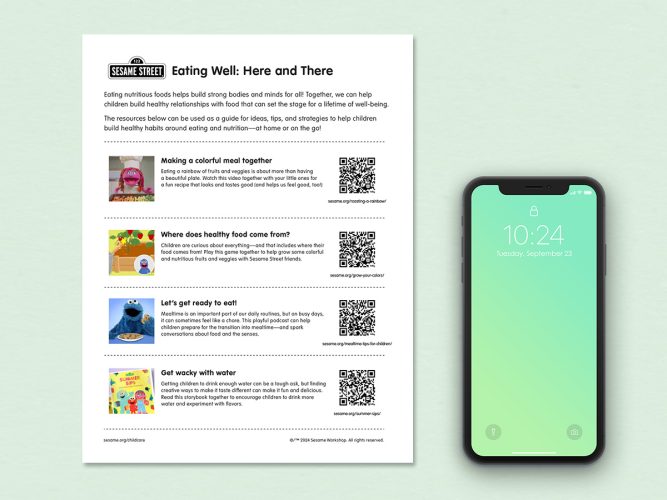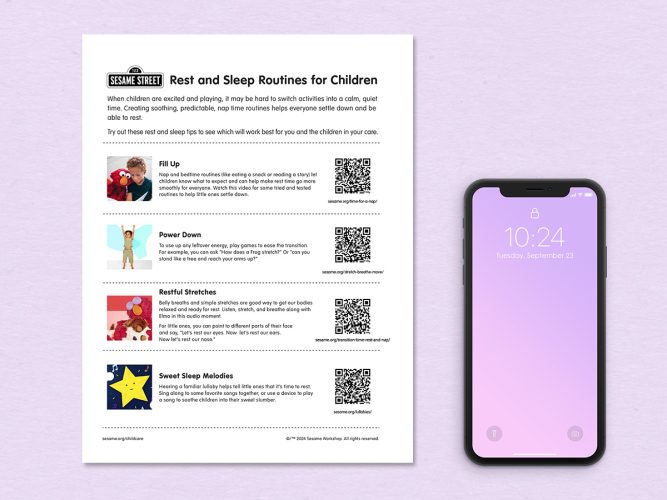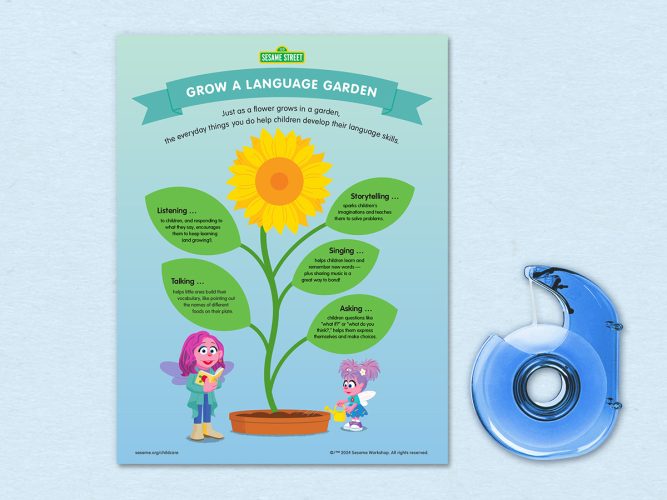
Learning at Home
Talk, sing, and play in your daily routines to help your child learn.
Show parents the video. Ask, “What idea from the video struck you as particularly interesting?” List responses on chart paper.
Then, on a separate sheet of chart paper, list daily routines and ask for ideas about what parents might say to children during those times (suggestions will depend on age of children; possible ideas are in parentheses).
- Getting dressed (“One sock…two socks!” “What body parts do you have a pair of?”)
- Preparing food (“Now mommy is mashing the bananas.” “Let’s chop…mix…pour…spread…shake!”)
- Walking down a street (“Oh look, it’s a big bus.” “What store is that?”)
- Observing an insect up close (“What a teeny-tiny ant!” “Look, an ant! Where do you think it’s going?”)
- Looking up at clouds (“I see a big, fluffy, white cloud.” “What shapes or animals do you see in the clouds?”)
- Walking through a park or field (“This grass is green and soft.” “What do you see around us that is alive? What is not alive? How do you know?”)
- Dropping mail in the mailbox (“Bye bye, letter!” “How do you think this letter will travel to Grandma?”)
- Seeing a firefighter or police officer (“That’s a big, shiny, red truck.” “A firefighter helps keep us safe if there’s a fire.” “What other people have important jobs?”)
- Putting child to bed (“What did we do today? What was your favorite part of your day?”)
Ask parents, “If you were in this room with your child, where could you find a learning opportunity?” Point out some possibilities, such as looking for all the rectangles in the room (door, windows), examining a poster up close and naming its colors, or naming words that describe how a white board feels (smooth and cool).
Invite parents to continue to consider more possibilities once they’re back home with their children.

Eating Well: Here and There
A printable page with easily shareable resources to encourage children’s healthy relationships with food.

Routines to Help Children Rest and Sleep
Soothing, predictable, nap and bedtime routines can help children settle down for rest.

Cultural Connections through Family Engagement for Building Stronger Bonds

Mindful Caregivers
Practicing mindfulness is a great way to slow down and reset.

Tracking Child Development: A Caregiver’s Guide
Keeping track of milestones and going to routine screenings helps children stay healthy and thriving.

Growing a Language Garden: Everyday Language Development
A reminder of the simple things you do every day that nurture children’s language skills.

The Heart of Communities: Supporting and Celebrating Family, Friend, and Neighbor Caregivers
